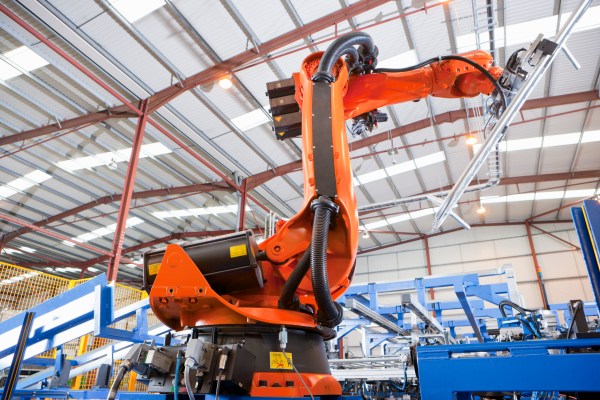After two years of flying high, industrial robot orders dropped by nearly one-third last year. Per the Association for Advancing Automation (A3), 31,159 industrial robots were purchased by North American companies in 2023, down from 44,196. That marks a 30% drop for this key market. The number is also down (albeit less so) from 2021’s 39,708.
The drop is certainly a precipitous one worth examining. What it isn’t, however, is a complete surprise. Last August, we cited a report from the industry group noting a 37% year-over-year drop for the second quarter of 2023. That was the second straight quarterly decline for the industry.
These numbers throw a bit of cold water on what has been regarded as a white-hot industry dating back at least to the beginning of the pandemic. There is, no doubt, some cause for concern among robotics manufacturers. But all of this needs to be caveated by the fact that both 2021 and 2022 marked record sales for the industry. Some regression to the mean was probably inevitable here.
But the story behind the numbers is far more complex than a slowdown in adoption following a pandemic-fueled automation spree. As robust as the category has appeared at times, it’s not immune to the same macroeconomic headwinds as the rest of the tech world. In fact, in some ways, it may be more tenuous. Industrial robots aren’t exactly a luxury item, but they are big-ticket purchases with a lot of upfront costs, pushing many to begin considering the robotics-as-a-service (RaaS) rental model.
Uncertain times are no doubt a major cause of caution. Manufacturing continues to be the key driver for automation, and as the economy struggled in 2023, many postponed plans to purchase new cars. The chip shortage also continued to bottleneck production in the first half of the year. Automotive manufacturing robots — which make just over half the total number — saw a 34% drop for the year.
Non-automotive robots faired only slightly better last year, dropping 25%. According to A3, metal electronics manufacturing, food/consumer, medical and plastics/rubber saw the largest demand outside of automotive for the year.
A3 president Jeff Burnstein struck a hopeful note, stating, “While robotic sales were down over the year, 2023 ended with both an increase over the previous quarter and a nearly equal number of sales from automotive and non-automotive companies. Both are promising signs that more industries are becoming increasingly comfortable with automation overall. While we expect to see automotive orders rise again, there’s little doubt that orders will increase from all non-automotive industries as they recognize how robots can help them overcome their unique challenges.”
Certainly there are economic factors driving potential sales, going forward, including many industries’ stated hiring issues. But the process of adopting automation for the first time is rife with growing pains, and in some cases the promise of new robotics technologies isn’t mature enough for meaningful widescale adoption.
Robots, on the other hand, are a common sight in automotive manufacturing, which has a decades-long head start on the rest of the industry. Factoring in slowing EV purchases has meaningfully impacted the overall figures.
